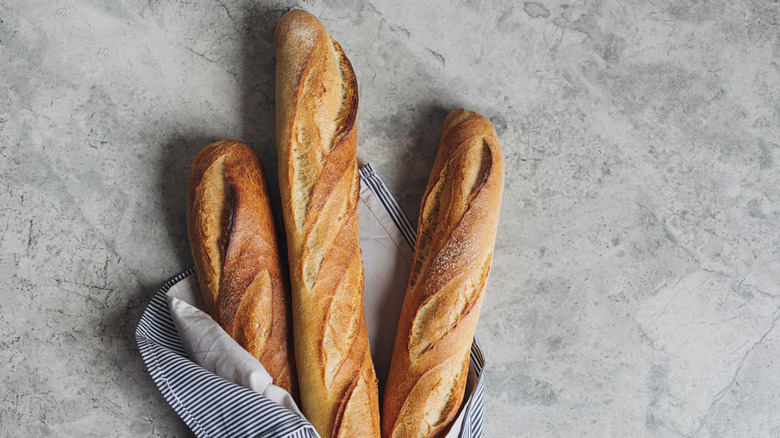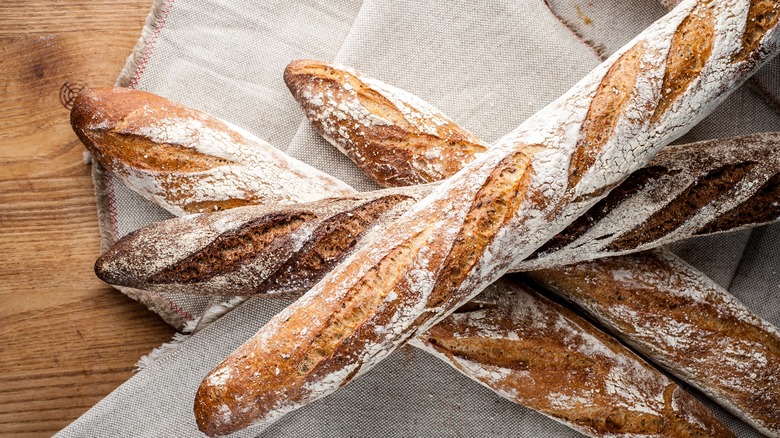How A French Labor Law Helped To Create The Baguette
There is nothing quite like an authentic French baguette, which seduces the senses of even those whose diets leave little room for carbs. Its crust can range in color from a dark yellow to a darker brown, which gives way with a satisfying crunch to reveal a cream-colored interior that is not too densely packed and marked with holes of different sizes. And of its scent — master baker Eric Kayser describes the scent as one with "200 different flavors."
The baguette, with its legally mandated four ingredients of wheat, flour, salt, and yeast, per BBC Good Food, is a relative newcomer to the French bread scene. The Good Life France says that until the 19th century, bread was made with wheat, rye, or buckwheat and then extended with fillers "to make the flour go further: [including] sawdust, hay, dirt and even dung." Even so, the site says peasants could still consume up to three pounds of these breads daily.
Baguettes didn't come to be until the late 19th century, per MasterClass, but they didn't become the bread that we recognize today until 1920, when their length (26 inches), weight, and price were determined. But another development occurred during the 1920s, eventually dictating the baguette's shape and thickness.
French law dictates what an authentic baguette should be
The Good Life France says bakery workers were given the near-impossible task of getting bread proved, baked, and ready for breakfast after 4 a.m. because they were legally banned from starting work before then. Creativity led to the discovery that the thinner and longer baguettes were, the faster they cooked. Today, the baguette has different siblings, per MasterClass — a demi- or "half" baguette suitable for sandwich-making; an extra-thin shaped baguette known as the "ficelle," and the bâtard, which is slightly more plump.
Regardless of the shape, the making of a baguette is now governed by legislation known as Le Décret Pain (1993), per Cook's Info. Per BBC Good Food, authentic baguettes can only be made with wheat flour, water, salt, and yeast; they need to be sold in the same place they are made and can neither have preservatives nor be frozen. So, the bread goes from being peak crusty and chewy on the inside to stale within 24 hours. To take the guesswork out of finding out which bakeries sell the most authentic baguettes, BBC Good Food suggests you look out for a sign that reads: "Votre Boulanger. Un artisan authentique," which loosely translates as "Your baker [is] an authentic craftsman."

